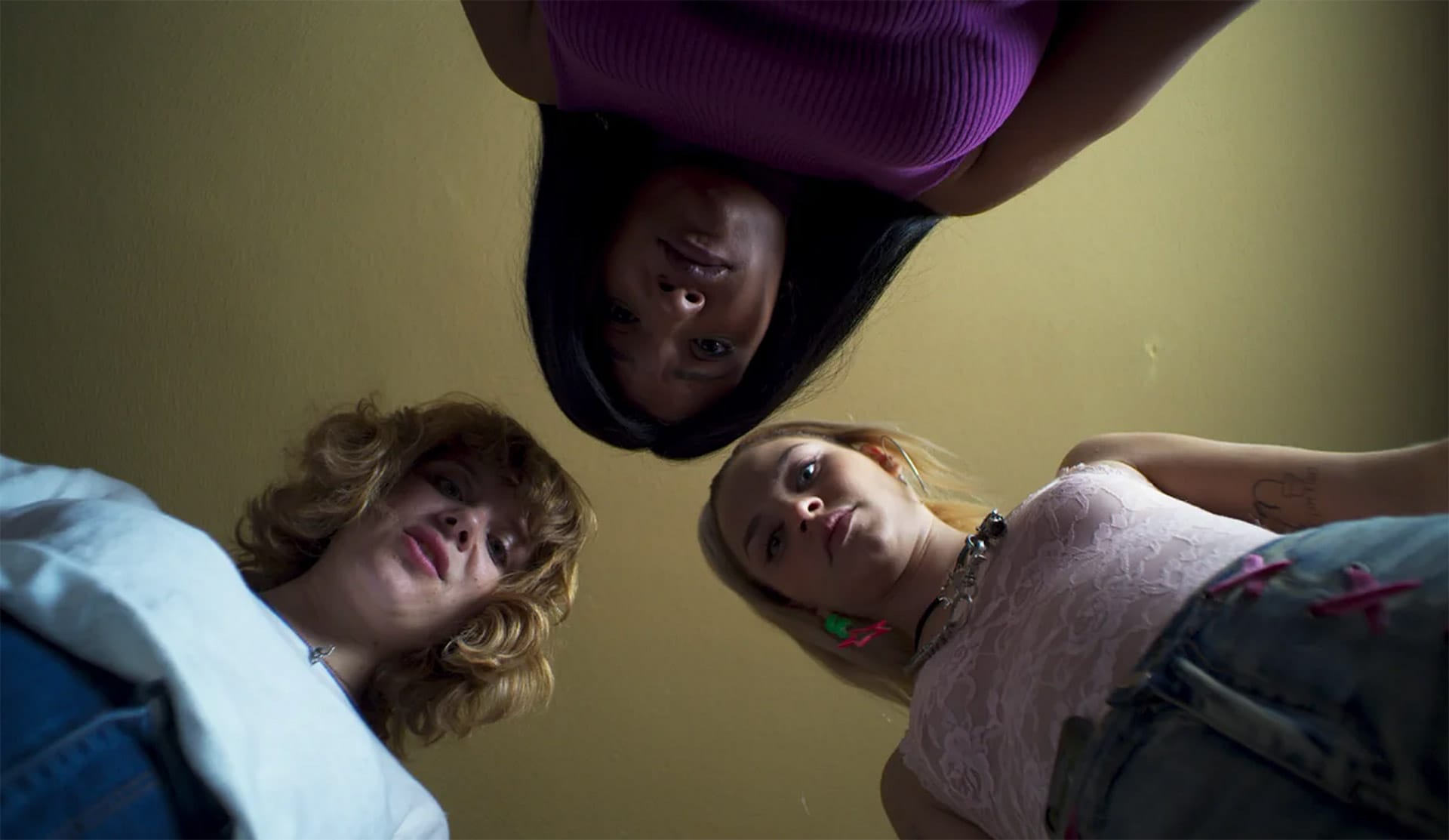Join GLAAD and take action for acceptance.
Trending
- Science Meets Style:+Life Unveils HIV Unwrapped at New York Fashion Week
- Election 2025: Virginia Gubernatorial, Lt. Governor, and Attorney General Candidates on the Record on LGBTQ Issues
- WATCH: G FLIP Talks Channeling New 80’s Rock Persona ‘Butch Springsteen’ For New Album “Dream Ride”
- Meredith Marks Hosts a Special Evening with GLAAD Ahead of the 40th Anniversary
- GLAAD Centers Black Queer Voices at United States Conference on HIV & AIDS
- From “Hacks” to “The Traitors,” LGBTQ Stars Shine at the 2025 Emmy Awards
- Fact Sheet: Debunking “Trans Terrorism” and Other False Claims in High-Profile Crimes
- Don’t miss “The Groomsmen: Second Chances” coming to your TV this Saturday!
Where We Are on TV 2023-2024

Spanish-language television remains a vital source of entertainment, news and cultural connection for Latine people and Spanish-speaking communities in the United States. Latines continue to be one of the fastest growing populations. They make up a sizable share of viewers among both English and Spanish-language TV, and yet an industry that once seemed poised to expand with them hasn’t delivered on that potential. This is especially true when it comes to LGBTQ Latine characters, writers and directors reaching U.S. viewers. This year has been a particularly sobering reminder of the limited representation of LGBTQ Latines in Spanish-language programming, as the numbers continue to decline.
When it comes to U.S. audiences, Latine people, especially Gen Z Latines, are more likely to identify as LGBTQ than their non-Latine counterparts. Even though Latines in the U.S. are becoming increasingly more English-dominant in younger generations, they’re still consuming bilingual media. A 2023 report from Pew Research shows that 63 percent of U.S Hispanics… report speaking Spanglish and 57 percent of U.S. born Latinos can “carry on a conversation in Spanish pretty well or very well.” According to a 2023 Nielsen report, Latine and Hispanic viewers have increasingly turned to streaming television – with Hispanics spending 48.9 percent of their TV viewing time on streaming.
Despite this, scripted TV shows in English and Spanish do not accurately reflect the audiences they serve. The progress seen over the last few years regarding LGBTQ and/or Latine representation has not resulted in lasting change on Spanish-language inclusive streamers or cable networks.
While streamers like Netflix, Hulu, Amazon, Apple TV+ and Disney+ take up the lion’s share of what audiences are streaming and offer varying degrees of Spanish-language programs in the U.S., the availability of streaming options continues to expand with predominantly Spanish-language platforms like ViX, Pantaya, AtresMediaPlayer and RTVE Player+. Cable networks like Univision and Telemundo also reach a wide swath of Spanish-language communities in the U.S. Though the overall data presented in this report only counts eight of the largest streamers, and English-language programming available on broadcast and cable, the data presented in this chapter looks at Spanish-language programming across a broader range of streaming and cable networks available in the U.S.
There were a total of 34 LGBTQ characters featured on new or returning Spanish-language shows this year, down from 49 (a 31 percent decrease) last year. Ten of those characters appeared on Netflix, nine on Atresplayer, eight on Univision, four on RTVE Play, two on ViX and one on Apple TV+. Fourteen of these characters were leads (an increase from 11 last year), 14 were supporting characters and six were recurring. Thirteen of those characters (38 percent) were women, 19 (56 percent) were men, and two were nonbinary (accounting for just six percent).
Cisgender gay men were overwhelmingly represented this year, with more than half of the characters falling into that category. In terms of sexuality, there were 17 gay men (50 percent of the characters), five lesbian women (15 percent), and four bisexual characters (12 percent). One character (three percent) is a straight trans man. Seven characters’ sexualities were undefined (21 percent) and there were zero asexual characters represented. In terms of gender identity, five trans women are featured among the 34 characters listed (up from two last year), with one trans man and two nonbinary characters represented among streamers and cable this year.
As for racial diversity, there was only one Black character and one Middle Eastern and North African (MENA) character included in the 34 LGBTQ characters counted, while 19 characters (56 percent) are white. In regards to ethnicity, only 13 characters are Latine. To be clear, this data draws a necessary distinction between speaking Spanish and identifying as Latine – particularly given the range of characters from Spain featured in this report (who speak Spanish but are not from Latin America). It’s also important to note that while “Latine” is a word that describes a person’s ethnicity, there is also racial difference among Latine people. That said, the 15 non-white LGBTQ characters on Spanish-language programming accounted for only 44 percent of the survey this year.
While there’s much work to be done, some of the most prominent LGBTQ representation we saw on the eight largest U.S. streamers included Élite and Sagrada familia on Netflix, where a number of LGBTQ characters are featured as leads. LGBTQ supporting characters are featured on Netflix’s Nothing to See Here and Madre de Alquiler, as well as Apple TV+’s bilingual comedy Acapulco. While ten of the characters counted were on Netflix and one was on Apple TV+, within the range of this survey Amazon, Disney+, Max, Hulu, Paramount+ and Peacock unfortunately featured zero LGBTQ Spanish-language characters (although Amazon did release the exceptional series Sin Huellas, a Spanish-language comedy featuring a lesbian Romani character as one of its two leads, which was released before June 2023 and therefore counted in last year’s report).

Newer Spanish-language streamers are bringing a wider array of Spanish-language content from Latin America, Spain and beyond, gaining traction with audiences while creating bold content that brings exciting LGBTQ characters to life. ViX, Atresplayer and RTVE Play are particularly well-represented in this year’s Spanish-language report.
Shows like Zorras, a bold sex-positive comedy-drama series featuring lesbian and bisexual women in leading roles, and Noches de Tefía, the GLAAD Media Award-nominated series inspired by a real-life concentration camp where LGBTQ people were imprisoned under Spain’s Francoist regime, can be found on Atresplayer. Trans actress Abril Zamora also returns to screens in a supporting role on Atresplayer’s Un Nuevo Amanecer, an off-beat comedy series about an actress in rehab. El Juego de Las Llaves, a steamy comedy series available on ViX, is one of the few returning series in this year’s report featuring LGBTQ leads. ViX also streamed Las Pelotaris, the GLAAD Media Award-nominated series with several queer leads, which was counted in last year’s WWATV. RTVE Play’s 4 Estrellas, an eccentric comedy about four women running a hotel after the family’s patriarch dies, features two queer women and a nonbinary character in supporting roles, as well as a trans character portrayed by trans actress Celeste González in a recurring guest role.
The expanding options for streaming audiences doesn’t necessarily mean cable television has entirely lost steam, but there has been a drop in LGBTQ characters in scripted content on the two largest Spanish-language networks in the U.S. – Univision and Telemundo. While streamers this year offered at least a few stories featuring LGBTQ leading characters, the same isn’t true for cable. Univision featured some LGBTQ characters in supporting and recurring roles, but none as leads, while Telemundo had zero LGBTQ characters (leading, supporting or recurring) across all their scripted programming. Univision’s scripted programming included eight LGBTQ characters on telenovela dramas like El Amor Invencible, Vencer la Culpa, Tu Vida Es Mi Vida, El Amor No Tiene Receta and Golpe de Suerte.
Across all the series counted in this chapter, transgender and nonbinary representation is still sorely lacking – and when it is present, the people portraying these characters are far too often cisgender. Happily, Ander Puig on Netflix’s Élite, Coco Máxima on Univision’s El Amor No Tiene Receta and Abril Zamora on Atresplayer’s Un Nuevo Amanecer are trans performers playing roles that align with their gender identity, while Iván Vigara (a trans man) plays a nonbinary character on RTVE Play’s 4 Estrellas. Casting trans and nonbinary performers to portray trans and nonbinary characters is essential to combat years of harmful and stereotypical casting, while bringing authenticity and the depth of lived experience to their portrayals.
When it comes to trans storylines on Spanish-language programming, we were glad to see fewer storylines about trans women focused on the process of medical transition and/or transphobic violence — a trend that limits what we learn about these characters to one facet of their lives. We still, however, don’t see many trans characters taking center stage.
It’s also important to note that trans men are missing entirely from Spanish-language network programs, with the exception of Netflix’s Élite, and saw little improvement in representation among streamers, while nonbinary characters are still sparse. Racial diversity among LGBTQ characters in Spanish-language programming is also severely lacking – particularly given the fact that Pew estimates 12 percent of Latinos in the U.S. identify as Afro-Latino. Ensuring writers’ rooms and casts include Latine LGBTQ creatives, as well as people of all ethnicities, including Afro-Latines, is a key starting point towards that improvement.
Non-scripted or reality shows, some of which air several nights per week and thus command a large audience share, offer a bit more positive news in terms of LGBTQ inclusion. While unscripted programming isn’t counted in this chapter’s data, highlighting popular shows where real-world LGBTQ people take center stage offers a bright spot when it comes to TV representation. Drag Latina from Revry and LATV is a bilingual drag competition featuring Latine talent from across the globe. Season four of Telemundo’s La Casa de los Famosos, currently airing, has an LGBTQ cast member, as did Los 50. On UniMás, the dance competition Mira quién baila featured a gay contestant, the dating show Enamorándonos included various gay couples and aired a wedding between two women during one of their special episodes. ViX aired Wendy, perdida pero famosa, a docu-series following Wendy Guevara, a trans performer and activist who first stole Mexico’s heart as a contestant (and winner!) on La Casa de los Famosos. Drag Latina on LATV, Wendy, perdida pero famosa on ViX and Enamorándonos on Unimás all received a GLAAD Media Award Special Recognition for their programming in 2023.
While many of the scripted series counted feature characters that bring meaningful, substantive representation to the screen, a number of LGBTQ-inclusive shows have been canceled. Of those still on the air, many fail to give LGBTQ characters major storylines while others struggle to cast LGBTQ roles appropriately. Overall, scripted series regularly consumed by Latine and Spanish-speaking families across the U.S. have significantly lagged when it comes to LGBTQ-inclusivity in this year’s report – reversing the progress we so sorely need.
According to a 2022 Neilson study, the Latine population makes up 19 percent of the US population, but a whopping 42 percent of the viewers of the most watched streaming content. This is an essential audience to networks and streamers that could easily be lost if there is not more inclusion on Spanish Language programming.
 “Every human being wants and needs a sense of belonging. Storytelling can provide that, with its power to move, entertain and even enlighten. That is why the inclusion of LGBTQ Latines in the media we all enjoy and count on is incredibly important. Whether living in the US or in Mexico, Central or Latin America or Spain, we want to see our stories told. It’s heartening to see an increase in LGBTQ characters on streaming platforms, and we would love to see the same on network television, which still plays such an important role in the lives of millions of Spanish-speaking people. The shows and series we sit down to watch with mom and dad, abuela and abuelo, do far more than provide a fun moment of entertainment—they can have the power to open connections and conversations that, in the real world, make families more united and individuals far more accepted and loved.”
“Every human being wants and needs a sense of belonging. Storytelling can provide that, with its power to move, entertain and even enlighten. That is why the inclusion of LGBTQ Latines in the media we all enjoy and count on is incredibly important. Whether living in the US or in Mexico, Central or Latin America or Spain, we want to see our stories told. It’s heartening to see an increase in LGBTQ characters on streaming platforms, and we would love to see the same on network television, which still plays such an important role in the lives of millions of Spanish-speaking people. The shows and series we sit down to watch with mom and dad, abuela and abuelo, do far more than provide a fun moment of entertainment—they can have the power to open connections and conversations that, in the real world, make families more united and individuals far more accepted and loved.”
– Monica Trasandes, Senior Director, Spanish Language & Latinx Media and Representation
Gender breakdown of LGBTQ characters on Spanish Language Series
No Data Found
No Data Found
Total LGBTQ Characters: 34
- Men: 19 (56%)
- Women: 13 (38%)
- Nonbinary: 2 (6%)
Sexual Orientaiton of LGBTQ characters on Spanish Language Series
No Data Found
No Data Found
Total LGBTQ Characters: 34
- Gay: 17 (50%)
- Lesbian: 5 (15%)
- Bisexual+: 4 (12%)
- Queer: 0 (0%)
- Straight: 1 (3%)
- Asexual: 0 (0%)
- Sexual Orientation Undetermined: 7 (21%)
Racial Breakdown of of LGBTQ characters on Spanish Language Series
No Data Found
No Data Found
Total LGBTQ Characters: 34
- White: 19 (56%)
- Black: 1 (3%)
- Latine: 13 (38%)
- API: 0 (0%)
- Multiracial: 0 (0%)
- MENA: 1 (3%)
- Indigenous: 0 (0%)
Table of Contents
Share this
View Past Years’ Reports
MEASURE THE MOVEMENT
Your gift allows us to track the impact of our work, helping us better understand the state of acceptance and address the gaps with advocacy — like pushing for more trans representation in movies.
More Publications from GLAAD
The GLAAD Studio Responsibility Index (SRI) maps the quantity, quality and diversity of lesbian, gay, bisexual, transgender, and queer (LGBTQ) characters in films released by seven major motion picture studios during the 2021 calendar year. GLAAD researched films release by Lionsgate, Paramount Pictures, Sony Pictures, United Artists Releasing, Universal Pictures, Walt Disney Studios and Warner
This report brings an academic and personal voice of the impact that the COVID-19 pandemic has had to-date on the fight to end the HIV epidemic, while also providing recommendations/ needs from people at community based organizations (CBOs) who serve and support the community. We underscore the disruption in access to HIV prevention and care services due to mitigation measures imposed in the early days of the COVID-19 pandemic, which will have implications for many years to come. We also highlight innovation to HIV service delivery that provided an important bridge between healthcare professionals and clients in an unprecedented time. Our recommendations will help sustain the fight against HIV in the United States in the midst of this pandemic, and future health emergencies.
Una guía de 11 páginas para ayudar a los escritores, productoras y líderes de cadenas y estudios a encontrar el camino para crear historias que sean divertidas o dramáticas, complejas y convincentes, totalmente atrapantes e inclusivas
An 11-page guide available in both English and Spanish to help writers, producers and network and studio leaders find a way forward toward creating stories that are funny or dramatic, complex and compelling, totally binge-worthy and also LGBTQ inclusive.












